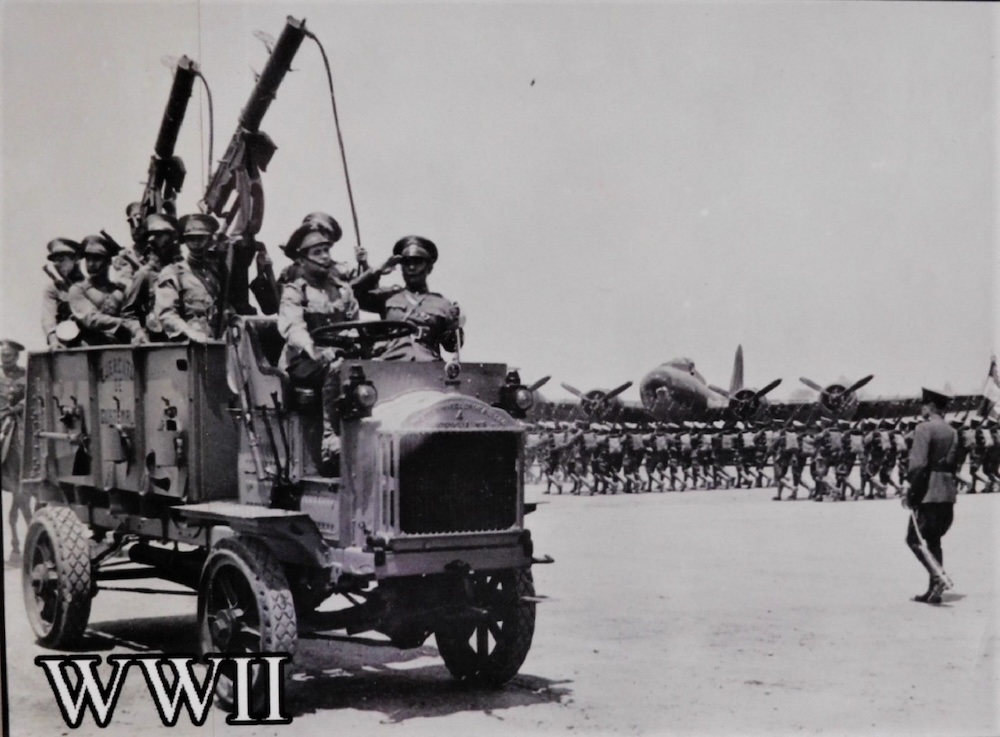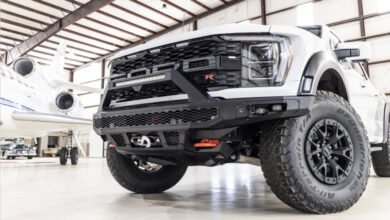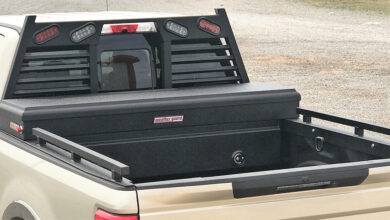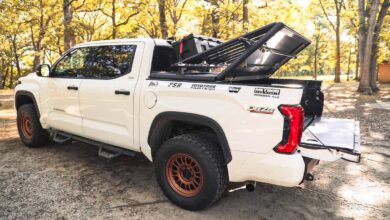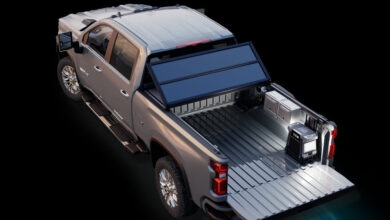Overlanding’s Beginnings: Been There, Done That
Military needs helped spur what’s become today’s latest off-road craze...
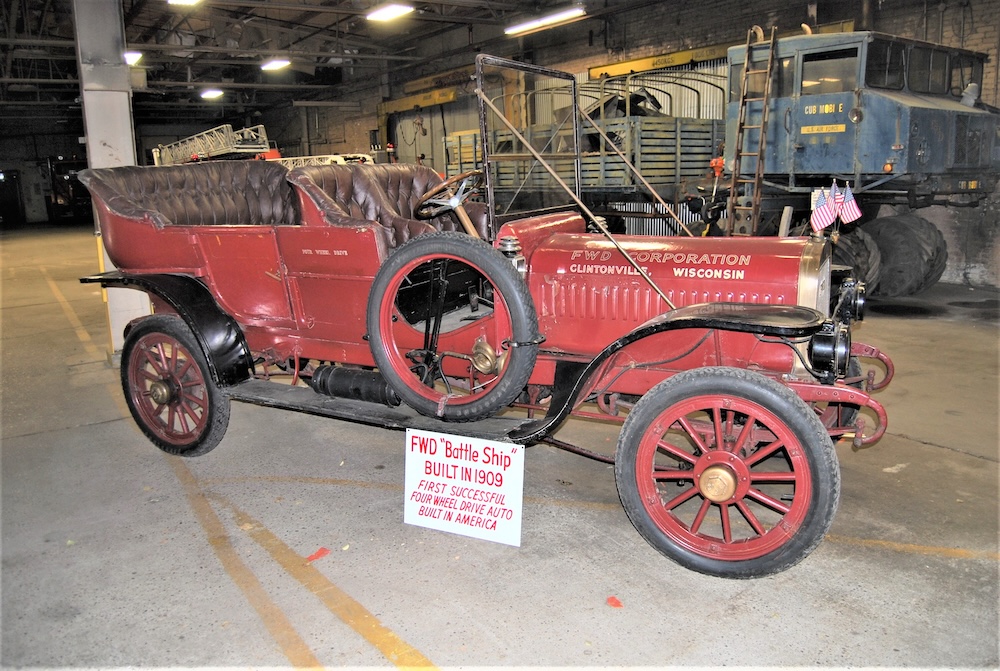
This article originally appeared in the May 2024 issue of THE SHOP magazine.
As more people get involved in overlanding, interest is sure to grow in the history of traveling over rough terrain in four-wheel drive vehicles. Research shows that getting away from it all for long periods of time has been a passion of many for quite a while—including the U.S. military.
The histories of many automotive activities such as auto and truck manufacturing, racing, car collecting and hot rodding have nebulous beginnings, with many contradictory claims of being “first.”
With overlanding, the true beginnings of the activity can be traced to a specific event in 1912.
In the fall of 1911, there were 700,000 licensed motor cars in the United States and 25,000 trucks. The United States Army owned 12 trucks. Three had been purchased by the Quartermaster Corps for use at the San Francisco depot. One went to Fort Sam Houston (today known as Joint Base San Antonio), in San Antonio, Texas, and one was used at the U.S. Military Academy in West Point, New York. Meanwhile, seven went to Manila.
The rest of the U.S. Army was still using mules for transport at the time, but the winds of change were blowing. Capt. A.E. Williams, a North Carolina native and West Point graduate, was on loan to the army’s Quartermaster Corps from the 19th Infantry. Williams was very interested in the concept of developing a mechanized national fighting force.
Williams persuaded his superiors to invite major automakers to participate in a cross-country trial, in the middle of winter, that would take the trucks overlanding through ice, mud and rain.
Of course, the term “overlanding” hadn’t been invented yet, but the road test by the military was described in at least one history book as “an overland run.”
Williams traveled the country by train to visit carmakers and talk them into entering this challenging run. The carmakers knew their models would not perform well and decided not to participate.
Then, Williams saw an advertisement from the Four Wheel Drive Auto Co. and arranged a trip to its headquarters in the small city of Clintonville, Wisconsin. After he met the founders of this new company, he proposed that FWD participate in a rugged test against trucks made by White, Sampson and Autocar.
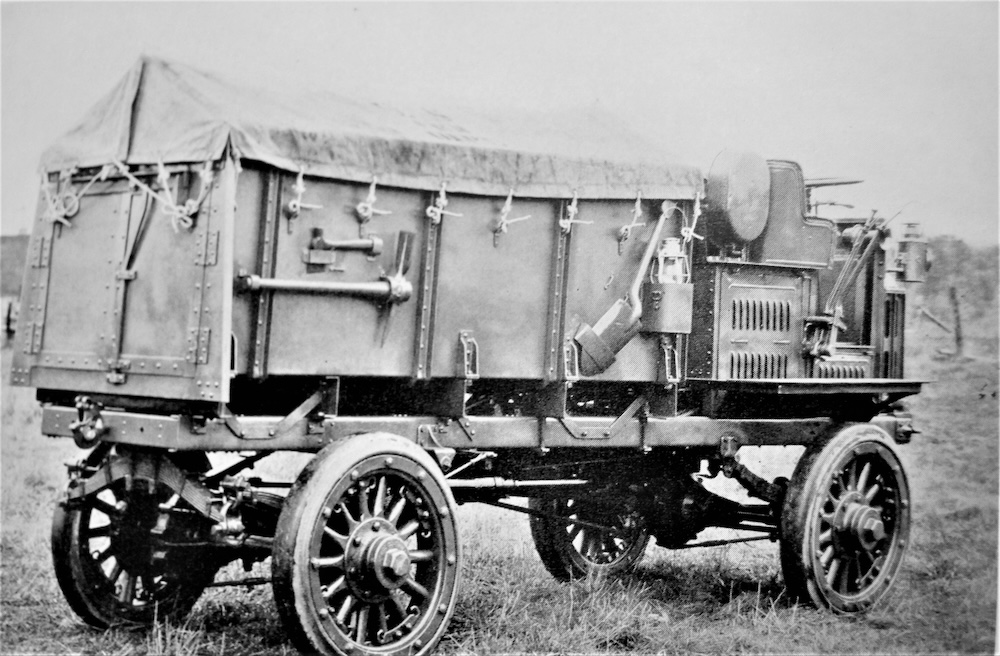
THE ‘BIRTHPLACE’ OF 4WD
Clintonville is known as “the birthplace of four-wheel drive” because Otto Zachow and William Besserdich, who ran a blacksmith and machine shop in the city, had invented a double-Y universal joint that permitted a vehicle’s wheels to be turned without interfering with the transmission of power.
This was patented in 1907-08 and $35,000 was raised from local residents to capitalize the formation of the Badger Four Wheel Drive Auto Company. It took until Dec. 20, 1912, for the company’s earliest factory to open.
The original intention was to manufacture four-wheel drive cars and a handful were produced and sold (one nicknamed “The Battleship” still remains in the FWD-Seagrave Museum in Clintonville).
A FWD driver named Frank Dorn loaded one of these open-bodied touring cars with eight men, including Capt. Williams, and drove it to a local hill over muddy roads. Later, the same car was loaded with heavy scrap metal and Dorn and Williams drove it through sandpits, plowed farm fields and even up the steps of a church.
Williams then returned to Washington, D.C. to tell his superiors about the FWD car. Within two weeks, an order was sent to Clintonville for a stripped-down model and spare parts. On Feb. 6, 1913, the U.S. War Department approved the test run and the FWD car (little more than a chassis and engine) and the three trucks mentioned earlier were assembled into a convoy.
A fifth truck—a Wilcox—was part of the original plan for the run, but it was abandoned even before the other vehicles started off.
The vehicles were driven 1,509 miles through Virginia, North Carolina, South Carolina, Georgia, Tennessee, Kentucky and close to Indiana. Originally scheduled as a four-week trial, the test ran seven weeks, at an average speed of 8-10 mph. The trucks realized 4-5 miles per gallon of fuel.
Even though the costs were less than feeding mule teams, the initial reaction was that there were too many problems. Williams was relieved of his special assignment to assess the practicality of a mechanized army. He was sent to the Philippines. Seemingly overlooked was the FWD car’s good performance.
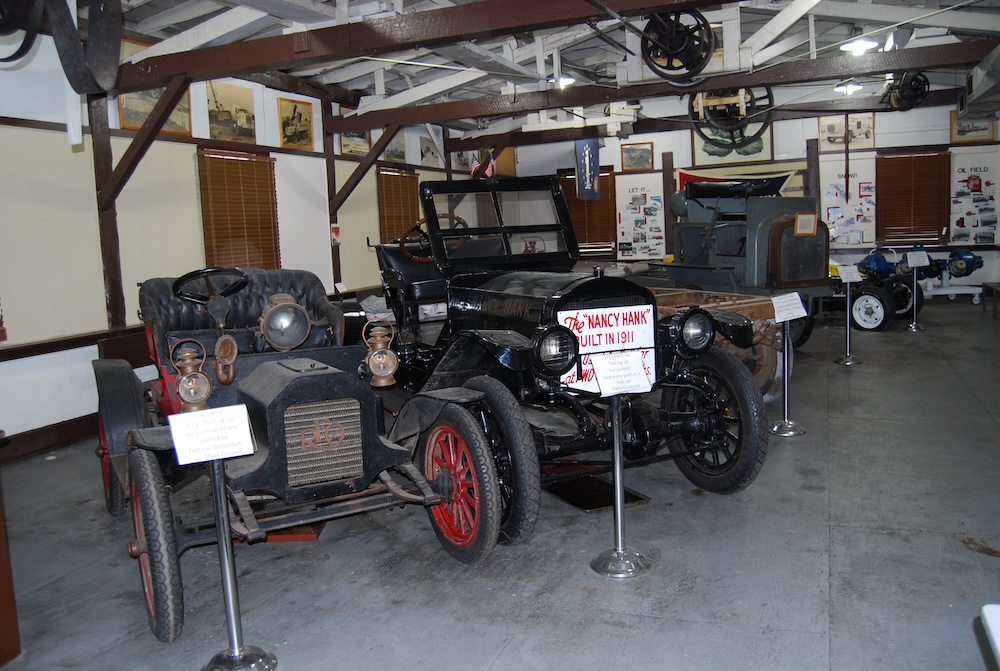
MAKING THE CASE
This wasn’t the case for long, however. In the spring, the U.S. Army asked if FWD could design a 3-ton truck with a four-wheel drive chassis system. In May, officials asked if such a truck could be readied for a 260-mile test run from Dubuque, Iowa, to Sparta, Wisconsin.
The previously used White, Sampson and Autocar trucks would also be retested, along with 1-1/2-ton Kelly-Springfield, Mack and Kato trucks that were rented for the challenge.
A report about the test run said, “That any truck managed to survive the ordeal in the heavy clay and sandy roads was remarkable and that the Four Wheel Drive outperformed the others was attested to by all of the regimental officers accompanying the march.”
Despite such reviews, rumors flying around Clintonville of a government order for 12,000 trucks remained rumors and the city’s small company struggled to pay its bills.
In the summer of 1914, Germany invaded Belgium and began a drive toward Paris. World War I had begun. Suddenly, war machines from airplanes to trucks were being used in the fighting.
FWD management realized that this raised the possibility of selling many of its trucks. That fall, a 3-ton truck and a 5-ton model were sold to exporters and shipped to England for testing. Within a month, an order for 50 trucks—more than FWD had made—arrived.
More orders followed. By the end of 1915, FWD was making money.
During 1915, the company had built and shipped 400 trucks and had Allied Government orders for 200 more each month. It was becoming a million-dollar corporation. In March of 1916, someone offered to buy the company for $2.5 million. As it turned out, it would soon be worth even more than that.
A few weeks earlier, there had been an uprising in Mexico, with a bandit named “Pancho” Villa killing 14 American soldiers and 10 civilians during a cross-border raid in Columbus, New Mexico.
Gen. John J. Pershing took 15,000 men into Mexico to hunt Villa down, but this was not easy with mules and wagons trying to push 500 miles (200 into Mexico) over very rough terrain.
Realizing it quickly needed mechanized transport, the U.S. Army placed an order for 147 FWD trucks on April 6, 1916. When FWD asked for a four-week delay, the National Defense Act was invoked, so 44 trucks that had been made, painted and put on a train for the British Army were instead unloaded and painted olive drab for the U.S. Army.
When advised that the British order would be held up, the country’s ambassador in Washington demanded immediate shipment. This inspired FWD Director Walter Olen to travel to the capital to settle the problem.
The solution was to again repaint the 44 trucks and send them to England. Then, a revised U.S. Army order for 28 trucks and 40 trained drivers and mechanics was prioritized. FWD committed all of its old and new resources to the project and made the first shipment to Gen. Pershing on May 19, 1916.
In Mexico, the FWD trucks performed well again, and Williams was involved in assessing their capabilities. His official report said, “The FWD is proving its superiority to all others (trucks) in the Mexican service.”
By Jan. 18, 1917, another trainload of trucks was sent to a military facility in Honolulu, Hawaii, making the Eighth Regiment of Artillery the first fully mechanized unit of the U.S. Army. The unit had 30 Holt tractors, three army-scout motorcycles, a Ford truck equipped with rapid-fire light weapons and 36 FWD military trucks including a machine shop truck and supply and ammunition carriers.
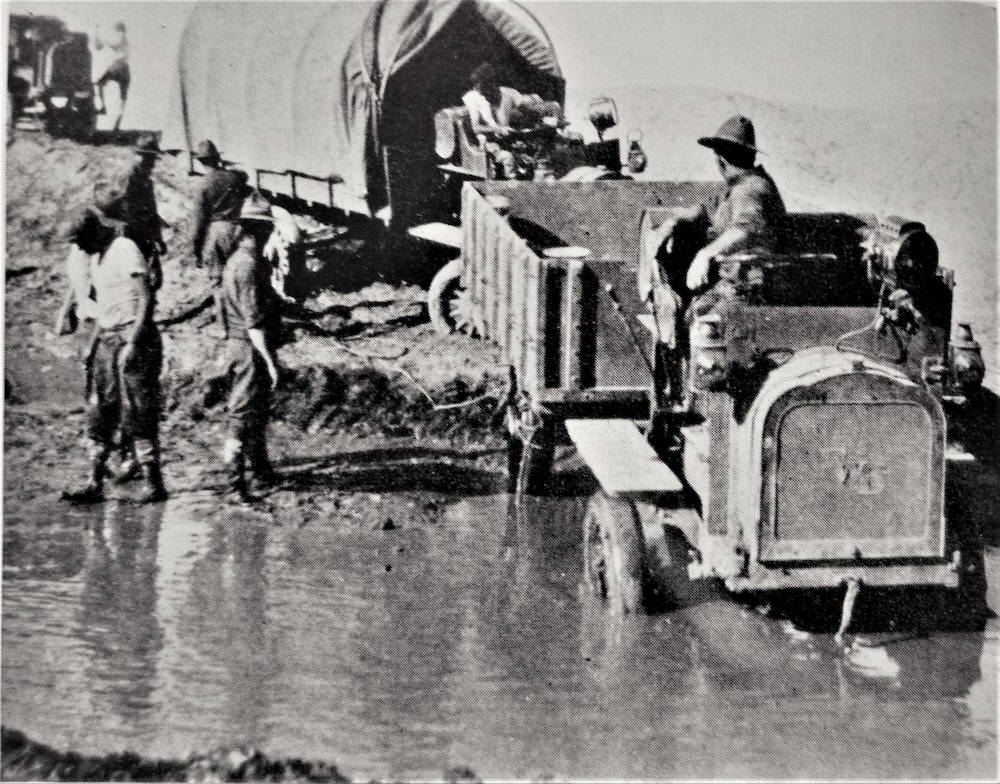
FOUR-WHEEL DRIVES START ROLLING
By April 1917, America was heading for involvement in World War I. Olen told his board that, in the advent of war, the company should prioritize U.S. military orders over foreign orders.
This was a bit of a hard sell, since half the board members were of German descent. In the end, they decided to be patriotic and accept Olen’s guidance.
The U.S. Army didn’t place an order for trucks until that July, but it was huge. In fact, at that time it was the biggest order the army had ever placed with a single manufacturer. It called for production of 3,750 3-ton FWD Model B trucks to be delivered at the rate of 175 per month.
To meet it, FWD had to hire additional workers from all around Clintonville, train the new employees, arrange to construct housing for thousands of soldiers and train a certain number of the fighting men on how to drive FWD trucks.
FWD’s success over only five years converted Clintonville from a small city into a boomtown. Local residents who had purchased shares of the company suddenly became “wise investors.” A Liberty Loan drive in the city quickly raised $183,000 (against a $50,000 goal).
Three other automakers—Premier, Mitchell and Kissel—got contracts to use their factory capacity to build FWD trucks. By mid-summer 1918, FWD had made 10,000 trucks for the U.S. government alone. By war’s end, 35,000 trucks had been sold.
Trucks shipped to Europe included 24,000 used to haul and supply cargo, 4,197 ammunition carriers and 5,000 used for other military purposes. This was 50% less than the estimated number needed to supply 2 million soldiers with 25,000 tons of supplies each day. Canadian soldiers said FWD meant “For Wonderful Delivery.”
On Armistice Day on Nov. 11, 1918, FWD had 1,600 male employees producing 20 trucks per day—600 trucks a month. What had started out as a small machine shop turned into a giant factory facility with 185,351 square feet of floor space.
But even longer-lasting than the company’s World War I success, was its contribution to the world of overlanding. What happened in the “birthplace of four-wheel drive” led to the development of vehicles and technology that overlanding enthusiasts enjoy today.
